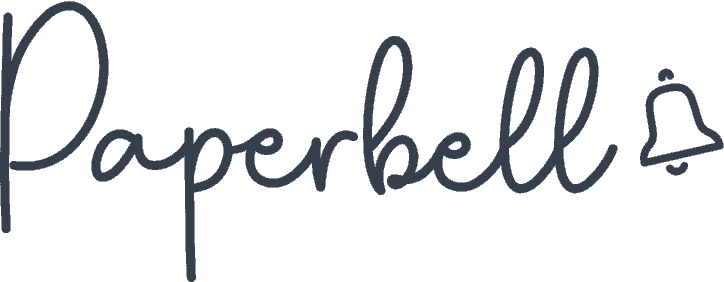No inventory, less overhead, and fewer people grinding it out. If you are a coach, then your business is special.
Yes, I’m trying to flatter you, but coaching businesses are different when it comes to accounting. You don’t have to deal with a lot of processes that e-commerce, software, and traditional businesses do.
That said, many coaches and their bookkeepers overcomplicate accounting and might lose sight of what actually needs attention. In this quick guide, I’ll run you through how you can simplify your bookkeeping as a coach.
3 Simple Questions to Answer for Your Bookkeeper
Your bookkeeper or tax professional works based on the information you provide for them. Misunderstandings can lead to wasted time, energy, and additional fees.
Run through these three simple questions each month to get your numbers 100% correct:
- Are there any unsettled payments?
- Do all your bank account statements correspond with each other, including PayPal and Stripe?
- Does anything look off, such as an oddly high or low expense?
Now that you’re on the same page, let’s see what you or your bookkeeper should check each month to keep your finances organized.
Monthly Accounting for Coaches: A Quick Checklist
Here are some specialized bookkeeping tips for your financial journey as a life coach.
1. Review Your Payments
Getting paid is the most important bit. Never let overdue invoices fester—they will end up rotting like a forgotten sandwich in a school backpack.
Ask yourself:
- Are there any unpaid invoices past due?
- Are there any invoices that you forgot to send out?
- Do all your invoices have the correct payment instructions?
Now, digging through your inbox, searching for clients who haven’t paid, and following up with them can take up a lot of time.
A better solution? Advance payments.
Paperbell eliminates the need to go back and forth with awkward emails nudging clients and makes sure that you get paid. As a payment-first platform, it only lets your clients book their first session once they’ve settled their payments.
Say goodbye to lengthy email threads about services you’ve already delivered.
Paperbell also lets you set up payment plans with installments or subscriptions. Your client’s next payment will be due at a set date and will be required before they can move on with their next session. Simple.
2. Calculate Your Cash Flow
According to a U.S. Bank study, 82% of businesses fail because of cash flow problems. Another report by Intuit found that 61% of small businesses regularly struggle with it.
Getting paid is the lifeblood of your cash flow, but there’s more to it:
- Cash in: The sum of your incoming payments this month
- Cash out: The sum of your expenses and payables (including the salary you pay to yourself and tax deductions) this month
- Cash flow balance: Cash in minus cash out, ideally a positive amount.
Review your cash flow retrospectively, and create a projection for the next period to make sure you can cover all your upcoming expenses—no surprises in tax season.
3. Evaluate Your Profit
The difference between a financial success and a hobby is profit.
Profit is simply revenue minus expenses. Ideally, your expenses are further broken down into funds allocated for:
- Client acquisition/marketing
- Serving existing clients
- Business development
This allows you to create a balanced budget plan and make sure you aren’t over or under-spending in any area.
Go through your profit and loss sheet to see the following:
- What is your overall profit this month? How does it compare to your average?
- What changed from last month that increased or decreased profit?
- Where do most of your revenue come from? What are you spending on the most?
- Are you on budget with expenses?
- Are there any opportunities to increase revenue (such as new income streams) or decrease costs (such as moving sessions online)?
Allocate your profit where it has the most impact so you can stay cash flow positive and grow your business year on year.
4. Check Your Balance Sheet
Balance sheets are often overlooked by business owners, but they can lead you to valuable insights and more profitable business decisions.
Create a balance sheet to review:
- Your assets, such as your cash in the bank, money people owe you, your computer, or your trademarks.
- Your liabilities, such as money you owe people, tax obligations, or business loans — it’s a good moment to also consult a tax prep checklist so you don’t overlook any filings.
- Any opportunities, for example, to lower the interest rate on your business loan.
This will give you a comprehensive view of what your coaching business is worth beyond the cash moving in and out on a particular business day.
Free Bookkeeping Tools for Coaches
Here are some free accounting software options you can use to keep your finances organized.
Wave Accounting
For coaches starting out, Wave Accounting is a great option. It has the basics you need, and it’s free. Ditch spreadsheets and get your bookkeeping in the cloud with financial statements generated automatically.
Debtor Daddy
Debtor Daddy is free with 25 invoices a month (after that, it escalates pretty quickly). If you don’t use advance payments, you can use it to automatically follow up with clients who haven’t paid you.
Zoho Books

Zoho Books offers a free plan for businesses making less than $50K annually. It includes invoicing, expense tracking, and financial reports, making it a great entry-level tool for solopreneurs.
Best Bookkeeping Tools for Coaches
QuickBooks Solopreneur

QuickBooks offers a lightweight version for solopreneurs that tracks expenses, estimates quarterly taxes, and separates personal and business finances. It includes a free 30-day trial and starts at $10 a month for the first quarter.
Xero
Xero is an online accounting software known for its user-friendly interface that both accountants and small businesses love. It has invoicing, expense tracking, bank reconciliation, and financial reporting tools.
It allows you to collaborate with your accountant in real time and has great features for managing foreign currency—a great choice if you have international clients.
Xero starts at $29 a month with generous discounts for your first quarter of using it.
FreshBooks
FreshBooks is another great alternative that’s designed with service providers in mind. It simplifies invoicing, expense tracking, and time management for solopreneurs.
It’s easy to get used to, and the automation features come in especially handy to minimize time spent on accounting or reporting to your bookkeeper.
It starts at $19 a month with discount deals for your first 6 months of using it.
Final Thoughts
Bookkeeping for coaches can be simple. Follow this simple checklist to keep more money in your coaching business and maintain financial stability.
If you want to ensure your payments and all other business processes run smoothly, try Paperbell. This all-in-one coaching website and client management tool handles your contracts, bookings, surveys, coaching logs, and a lot more. Try it for free with your first client.
Editor’s Note: This post was originally published in August 2020 and has since been updated for accuracy.








